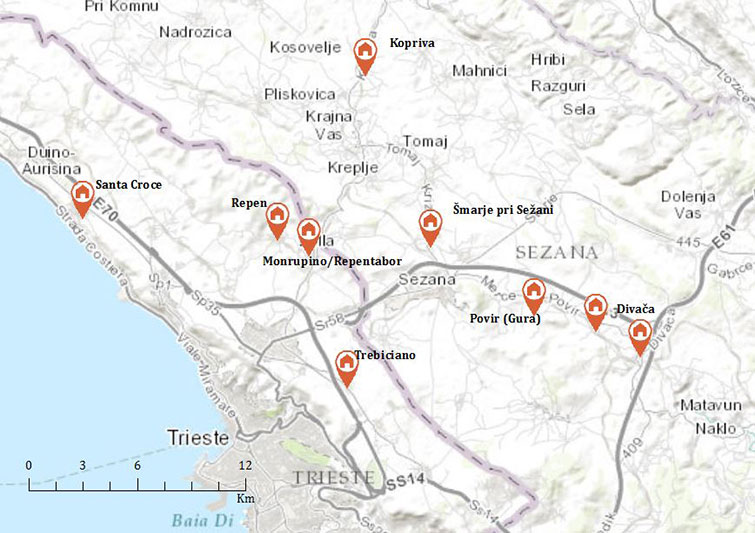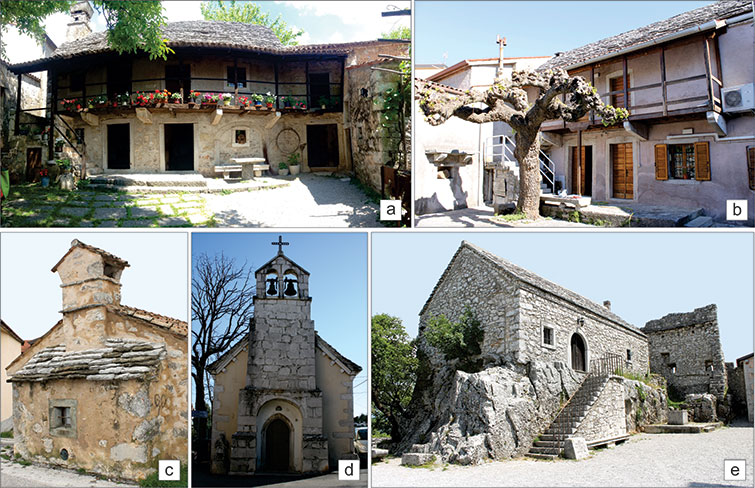Platy limestone – geologic definition and its use as a mineral commodity
Jernej Jež, Uroš Barudžija, Sara Biolchi, Stefano Devoto, Goran Glamuzina, Tvrtko Korbar
All five selected buildings from the Italian part of the project area testify to the significant cultural and religious heritage. They were also chosen due to the well-preserved platy limestone roofing and the best practices in the karst context. During the selection, special attention was given to the importance to the objects made of platy limestone and to those showing a peculiar architectural, historical and lithological relevance.
Ljenčkica’s House is located in Trebiciano, three objects (the Karst House Museum, Karst House and Community’s house) in Repen village and one church in Santa Croce (Figs. 2.3 and 2.4).


This study revealed the use of different limestone types from the close vicinity to the villages. The limestone plates used for roofing in almost all the objects studied, originate partly from platy limestone from the Upper Aurisina/Lipica Limestone Fm. and partly from fractured limestone coming from different geological units (e.g. Zolla, The upper part from the Aurisina Fms.). Plates of sandstone belonging to the Flysch formation were also partly used for Ljenčkica’s House in Trebiciano.
Since there are no platy limestone quarries in the vicinity of these selected building, we can hypothesize that in the past the inhabitants collected the slabs from limited outcrops or from the waste materials gathered around the quarries.
Massive limestone blocks are mainly built of light-grey massive limestone with abundant rudist shells which originate from the Zolla and the Aurisina Limestone Fms., from which Repen (both Classico and Zolla varieties) and Fior di Mare stones were extracted. The quarries are located in the municipalities of Monrupino and Sgonico. Alveolinid-Nummulitid Limestone or flysch sandstone was used only in the village of Trebiciano. The latter is located far from the most famous limestone exploitation areas, at the transition between the Karst plateau and the city of Trieste, where Flysch prevails.
The results of the study of show-case objects in Italy and Slovenia have been published in a handbook “Platy Limestone - 10 case studies in the Classical Karst ”. The handbook was prepared and financed as part of the RoofOfRock project.










